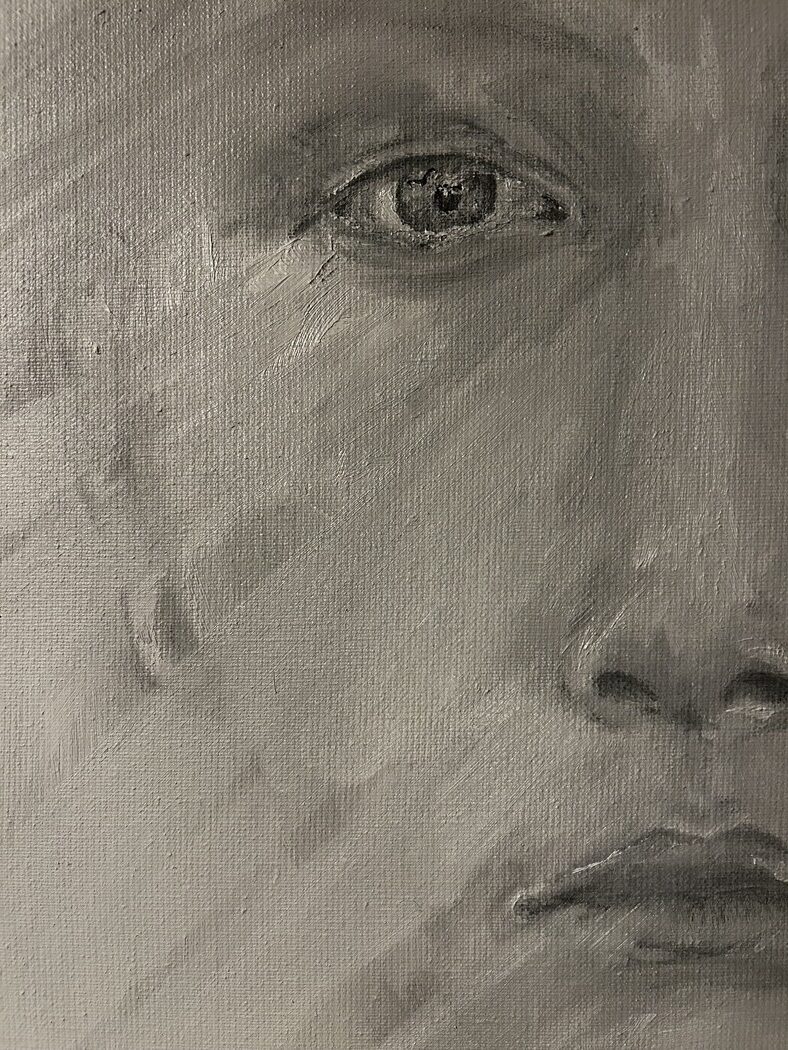Chris Janssen
Where do you live: Roermond (The Netherlands).
Website | Instagram
Your artistic style breaks away from traditional norms. What inspired you to embrace imperfection and reject conventional rules in your work?
I am naturally interested in other people, what drives them, the thoughts that flow through their mind. I try to see and evaluate things from different angles. I am an optimistic person, cheerful yet also a deep thinker.
You mention that your work is influenced by years of experience with criminals, victims, and everyday people. How have these experiences shaped your artistic vision?
My experiences at work have certainly influenced me. In my working environment, people stay in a small space. This allows you to see all emotional facets: cheerful, sad, joyful, angry, aggressive, or desperate. I try to see people from all sides and capture what I see in my paintings. Who is the one walking past me and lost in thought? What is he/she thinking about? Why does he/she think like that?
A person without adornment is also beautiful. The same goes for my paintings: they don’t always have to be colourful to be beautiful. Ask yourself: what does a look say without words? Or if no words are spoken, what does that look actually say? Make your own colour, colour it yourself! Because of the work I did, I never wanted to go completely out there and be discoverable or visible to everyone. Now that I have taken a different path, I have made the choice to show my work—and therefore also myself.
 Chris Janssen | Gold and silver blind the eye
Chris Janssen | Gold and silver blind the eye
In your art, you aim to make people think and reflect. What emotions or thoughts do you hope to evoke in your audience?
I hope that people will stop at a painting and take the time to really look. What thoughts come up when you look, what does this evoke? The intention of my paintings is to capture the moment when one gets lost in thoughts. It would be nice if I could achieve that with the viewer.
Your statement, “Try not to be perfect,” reflects a strong philosophy. How do you incorporate this idea into your creative process?
Every person has an edge, and that’s where imperfection comes to the fore. No one is perfect, and my paintings are not a perfect representation of a person either. You can stop at each painting and wonder whether it is correct—for example, whether it is anatomically correct. What is correct and what is incorrect? The edge of imperfection is what inspires me and above which I want to float.
 Chris Janssen | Art of Silence
Chris Janssen | Art of Silence
Why is it important for you to leave your artwork open to interpretation, without providing specific explanations or titles?
Art is personal. It either affects you or it doesn’t. It gives you a feeling, it generates thoughts. That’s different for everyone. If it touches you, gives you a certain feeling, or generates certain thoughts, you develop a personal bond with it. Then it becomes your painting. That is what I do not want to influence by moving the other person in a certain direction with my thoughts and feelings. Let it be your own.
You explore the edges of your medium and style. Can you describe a moment when you pushed your boundaries and discovered something unexpected in your art?
Unexpectedly, an intense gaze can also be beautiful and not necessarily sad or heavy, as my paintings are often described. A dreamy look can also imply intense happiness. Look carefully and don’t judge too quickly. One day my work is sad, and the next day that same work is intensely happy, depending on your feelings and thoughts at that moment.
 Chris Janssen | Gold and silver blind the eye (Close up)
Chris Janssen | Gold and silver blind the eye (Close up)
How do you balance the freedom of creating without rules with maintaining your recognizable style?
My style and also my strength is the silence that I put in a painting. The quieter the work, the greater the thought. That is the place for feelings, dreams, and questions.


Leave a Reply
You must be logged in to post a comment.